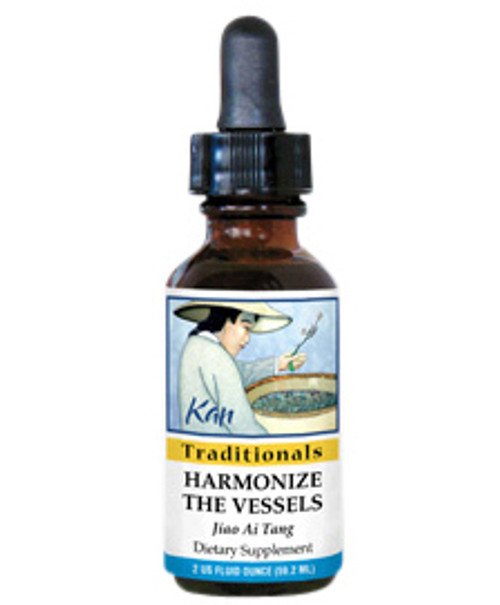Harmonize the Vessels, 120 tablets
| Unit Size | 120 |
| Potency | 7:1 |
| Properties | Supports a healthy menstrual cycle |
| Contraindications | Use with caution during pregnancy. |
| Chinese Symptomology | Occasional abnormal uterine bleeding accompanied by abdominal heaviness and due to Blood deficiency with concurrent Cold pattern, Occasional soreness and weakness of the lower back |
| Western Symptomology | Constant spotting, weakness, lower back discomfort; uterine bleeding accompanied by abdominal pain, excessive menstrual bleeding, breakthrough bleeding, and post partum bleeding; constant dribbling urination; bleeding hemorrhoids, peptic ulcer |
| Actions | Tonifies and stabilizes the Blood, reduces bleeding, regulates the menses, harmonizes Chong and Ren vessels |
| Pattern | Blood deficiency tending towards Cold, injury and deficiency of the Penetrating and Conception Vessels (Chong Mai and Ren Mai) |
| Tongue | Pale tongue with a thin, white coat |
| Pulse | Thin and frail |
| Chinese name | Jiao Ai Tang |
| English name | Harmonize the Vessels |
Description
Harmonize the Vessels is an excellent herbal prescription to help resolve Blood deficiency with a Cold conformation, as well as deficiency of the Penetrating (Chong Mai) and Conception (Ren Mai) vessels. It treats a wide range of menstrual related bleeding disorders with an underlying cause of Blood deficiency. These include heavy menses, abdominal pain, or spotting with menses and bleeding either during or after pregnancy. It nourishes the Chong Mai, or " Sea of Blood," while it stabilizes the Ren Mai, which directly controls the Uterus. All disorders of the Uterus must be treated by accessing the Chong Mai and/or Ren Mai vessels on some level. Both of these Extraordinary vessels flow through the womb and if either is deficient of has suffered injury, they become incapacitated in performing their functions of containing and guiding the Blood - therefore, bleeding occurs. (Kan Herb Company) *
Ingredients
| Pinyin Name | Common Name |
|---|
| Sheng di huang | Raw rehmannia root |
| Bai shao | White peony root |
| Ai ye | Chinese mugwort leaf |
| Dang gui shen | Dong quai root |
| Gan cao | Chinese licorice root and rhizome |
| Chuan xiong | Sichuan lovage rhizome |
| Tian qi | Tienchi ginseng root and rhizome |
| Zhi he shou wu | Processed polygonum multiflorum root (soybean) |
| Gou qi zi | Lycium fruit |









